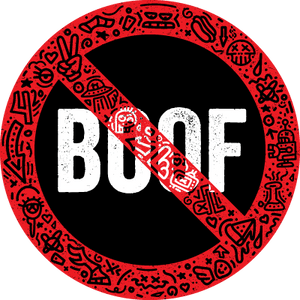How to Read a COA (Certificate of Analysis) Like a Pro
Aug 01, 2025
If you’ve ever picked up a cannabis product and scanned a QR code or searched a batch number, chances are you were directed to a Certificate of Analysis—also known as a COA. But what is it, and why does it matter?
At Doobie Labs, we believe that transparency isn’t just a compliance box—it’s part of consumer empowerment. So here’s a breakdown of how to read a COA and what to look for before lighting up or hitting that vape.
🔍 What Is a COA?
A Certificate of Analysis is a lab report issued by a third-party testing facility that verifies what’s in your cannabis product. It helps confirm:
-
Potency (how much THC, CBD, and other cannabinoids are present)
-
Terpenes (the flavor and aroma compounds)
-
Contaminants (like pesticides, mold, heavy metals, or residual solvents)
Think of it as your product’s report card—a quality check from an independent source.
📊 Key Sections of a COA
Let’s break down what you’ll typically see on a cannabis COA.
1. Cannabinoid Profile
This is where the COA shows levels of various cannabinoids, often including:
-
THC (Δ9-tetrahydrocannabinol): the primary psychoactive compound
-
CBD (cannabidiol): non-psychoactive, may help with anxiety/inflammation
-
CBG, CBN, CBC: minor cannabinoids with emerging therapeutic potential
These are usually listed as percentages by weight (e.g., 23.7% THC) or mg/g.
🧠 Pro Tip: Look at Total THC and Total CBD, not just the raw Δ9-THC. Total THC accounts for THCa, the non-psychoactive precursor that converts when heated.
2. Terpene Profile
This section isn’t always included, but when it is—pay attention. Terpenes shape the flavor, aroma, and even effects of your cannabis.
Common terpenes include:
-
Myrcene (earthy/musky – may promote relaxation)
-
Limonene (citrus – uplifting/mood-enhancing)
-
Caryophyllene (spicy – may reduce inflammation)
🌿 At Doobie Labs, we publish terpene profiles for our Live Resin Disposables and Premium Flower because we believe taste matters just as much as strength.
3. Contaminant Screenings
This part tells you what isn’t in your weed—super important for health and safety. Labs test for:
-
Pesticides
-
Heavy metals (like lead or arsenic)
-
Microbials (mold, mildew, E. coli)
-
Residual solvents (left over from extraction)
Look for the word “PASS” next to each category. Anything marked “FAIL” should be a red flag.
4. Batch & Lab Info
A good COA includes:
-
Product name and batch number
-
Test date
-
Name and credentials of the licensed lab
⚠️ Watch out for COAs without a matching batch number or test date older than 12 months—it may be outdated or misleading.
🧪 Why COAs Matter (Even If You’re Not a Scientist)
Reading COAs gives you control over your cannabis experience. It helps you:
-
Choose products that fit your desired effects
-
Avoid exposure to harmful contaminants
-
Support brands that prioritize transparency and safety
When you buy from Doobie Labs, you’ll find scannable QR codes on every package that take you straight to a full COA—no digging or guessing required.
✅ What to Look for (Quick Checklist)
| 🔎 Item | ✅ What You Want |
|---|---|
| THC | Clearly stated Total THC (e.g., 21–28%) |
| CBD | Total CBD noted, especially in balanced strains |
| Terpenes | % of dominant terpenes (if available) |
| Contaminants | “PASS” in all screening categories |
| Batch Info | Matching lot/batch number & recent test date |
| Lab Info | Verified, licensed third-party lab |
🔗 Want to See One in Action?
Check out the COA for our Cherry Gelato Live Resin Disposable [here]. It’s full of delicious terps—and nothing you don’t want.
🌱 Trust the Lab. Know What You Smoke.
At Doobie Labs, we don’t just make top-shelf disposables, flower, and prerolls—we make sure you know exactly what’s inside. Because good weed should never be a mystery.



